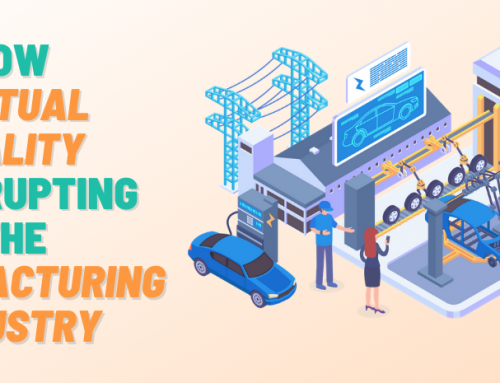
Today we are discussing why VR is not a mainstream technology yet despite excellent projections that Digi Capital, Goldman Sachs and PWC gave for this upcoming technology.
On a weekly basis, we are receiving inquiries from potential clients, media people, investors and peers in other industries who want to grasp the potential of the VR market and to understand how with immersive technologies they can create the real value.
Now, let’s have a look at 5 common, real-life scenarios that happen in the interaction: VR company-client-users-general market.
Bear in mind that most of the notable resources state that AR and VR market will be fully ready in 2020 and VR revenue will skyrocket in that very year, and not sooner. Thus, if the issues below are solved, the expansion towards industries that need to undergo digital transformation with the help of VR will be easier.
These reasons can show you what is required for VR to become part of our life yet as much as some futurists have predicted to happen in the close future:
1. THE ENTERPRISE INDUSTRIES AND CLIENTS NEED MORE CLARITY WHAT VALUE VR AND OTHER TECHNOLOGIES FOR INDUSTRIES 4.0 BRING TO THEM
If the client requires a custom-made ICT solution, the company team needs to estimate what approach and technology are the best for the client’s particular requirement.
Thanks to the inquiry about client’s needs during the discovery phase, both sides will learn more about desirable outputs, methodologies, as well as the expectations.
What happens to us at ARVRtech often is that clients approach us with a particular idea how VR can help them at a specific part of their value chain or they present a challenge they want to overcome in their business and we try to identify if VR is the best tool.
Through our survey and discovery phase methodologies we make it clear what is possible to do, where the limits of technology exist, and what are associated costs for different types of VR platforms.
Thus, it is incredibly important that in the business development arena for VR, as well as for the entire ICT industry, work the people who are excellent at communicating in different languages and reaching consensus among various parties: the one of the engineering/development community and the one of the client and business/market size.
2. VR HARDWARE DEVICES HAVE TO UNDERGO THE NETWORK EFFECT LIKE OTHER GADGETS
We witnessed with previous gadgets: from landlines to mobile phones that each of them becomes useful and valuable only if there are more people to use them. What is the point of being the only user of the smart phone if you cannot call anyone else?
Interestingly enough, the network effect typical for telecommunications industry could not be applied to the use case for Virtual Reality. People are not yet incentivized to buy VR devices since many people do not belong to publically-open VR communities as it is the case with social networks or messenger platforms.
Even the gaming communities in VR will not be sustainable, healthy and ecological if users rely on wearing headsets for a long period of time. Web-based VR may be much more beneficial to them in such cases.
The current state of technology is such that smart phones become a real asset so that we can timely deal with our work back log, connecting with our beloved ones or staying informed about the state of the world.
This is why there is a higher probability that the Augmented Reality content will be easily disseminated and more readily accepted than the one in VR since people already use their technology: mobile phones.
3. USERS NEED TO UNDERSTAND BETTER THE BENEFITS OF IMMERSIVE TECHNOLOGY
We have been discussing VR metrics so that this immersive technology brings results and users will need numerous touch points to fully harness its potential. In other words, we do not get to completely understand something as we first encounter it.
Instead we need to get familiar with VR in repeated occasions: when we hear about it initially and try it for the first time; when we ask teams in VR studios how they can help our brand; when we make together estimations what can be done so that VR answers creates value for our users; when we try and test the first version and the demo; when we get back into the studio after user’s feedback and successful debugging; when we launch our VR app and we continue to have a sustained feedback loop.
4. THE BUSINESS MODEL FOR VR APPS NEEDS TO BE BETTER DEFINED FOR USERS, VENDORS AND PARTIES THAT PAY FOR SUCH A SERVICE.
Answering this question of monetization goes hand in hand with answering the question: who will pay for Virtual Reality headset or VR and AR apps: the customer or the business owner i.e. big brand?
After working with more than 20 international companies from industries such as retail, smart factories, smart city infrastructure, education, event management who developed AR and VR apps with us it became evident that in the future also it will be the enterprise clients those who will request AR/VR or Mixed Reality apps because they will want their end-users to engage with it. So the consumer journey will be: Business to Business to Consumer. Unlike Facebook, Instagram or Whatsapp where consumers are already there and businesses will change their interaction.
Unless AR and VR are going to happen on big social media platforms, end-users will be targeted through apps and solutions of enterprise clients who want to engage through VR or AR.
5. THE DESIGN OF VR DEVICES NEEDS TO BE FRIENDLIER FOR A TYPICAL USER (WHO IS NOT AN EARLY ADOPTER)
Thanks to amazing design and user experience we decide to interact with a particular brand, community or technology.
If we look at the VR headsets available right now and how they feel to us, we may actually conclude that their design prevents us from wearing them longer.
Microsoft HoloLens is an exemplar state-of-the-art technology where we have greater flexibility in interacting with the real and virtual world.
Therefore, mixed and augmented reality from the usability point of you are much closer to an average user than Virtual Reality, often portrayed in these gears: Oculus Rift, Samsung Gear VR, HTC Vive, Google Cardboard.
It should not be forgotten for a single second that the usability of a product is one of the key metrics that contributes to product/market fit, which ultimately leads to greater customer satisfaction, market share and profit.


